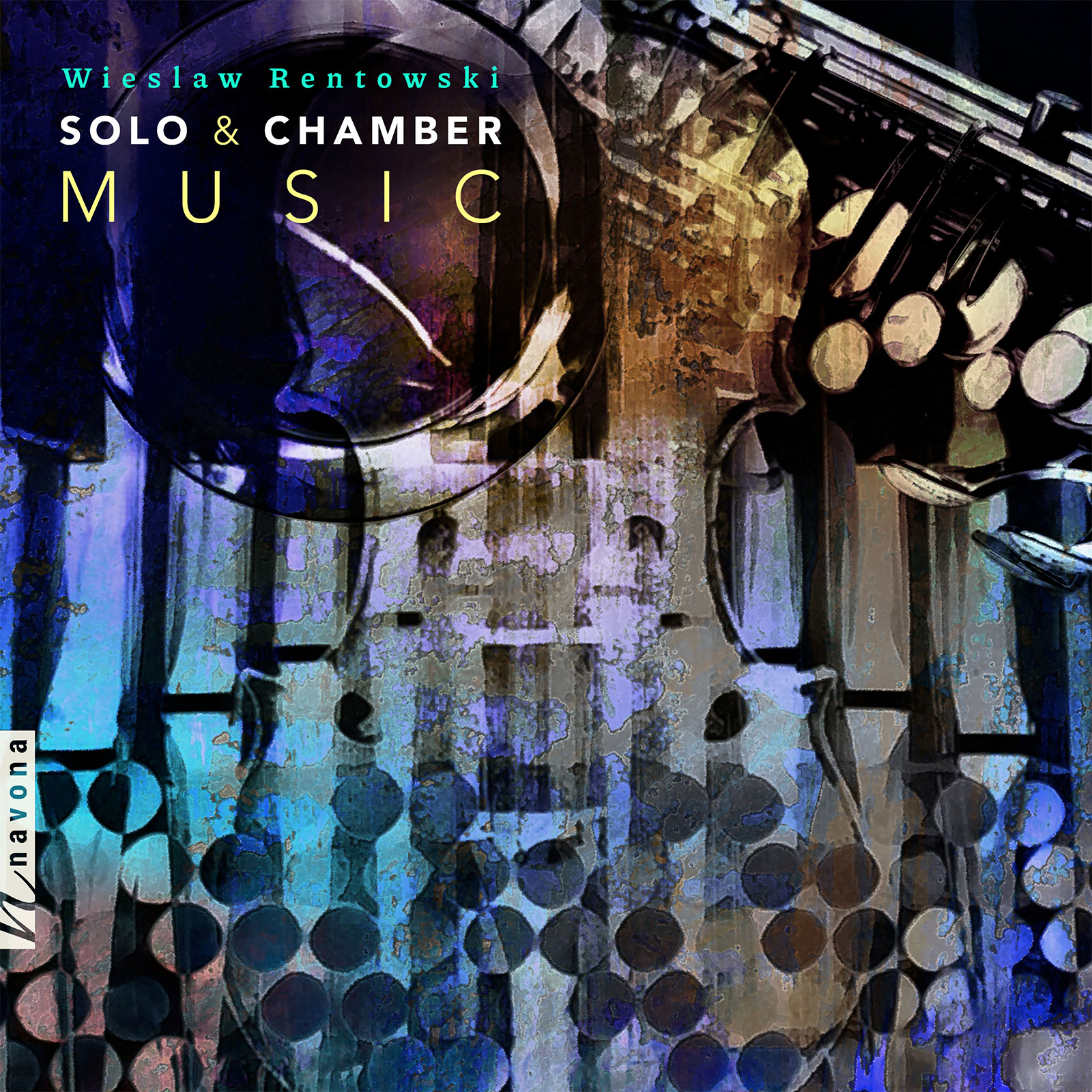Solo & Chamber Music
Wieslaw Rentowski composer
Internationally-renowned composer Wieslaw Rentowski presents SOLO & CHAMBER MUSIC on Navona Records, an album whose works span three decades of Rentowski’s chamber music oeuvre. Many of the works featured on the album are inspired by Louisiana and the Southern United States. The 1986 piece Baton Rouge for Prepared Piano celebrates the multitude of cultural traditions found in southern Louisiana and employs a variety of articulation techniques to create unique prepared piano sonorities. La Fiesta for Cello and Piano (1991) is a demanding work for cello that reflects the confluence of Spanish and Mexican cultures with others found in the Southern United States. More recent compositions include Affabile from 2017, whose musical language is more traditional and emphasizes melody and harmony while introducing nontraditional meter changes and musical textures. SOLO & CHAMBER MUSIC is a varied and inviting release that showcases the breadth and depth of Rentowski’s compositions.
Listen
Stream/Buy
Choose your platform
Track Listing & Credits
| # | Title | Composer | Performer | |
|---|---|---|---|---|
| 01 | Por dia de anos for Organ and Two Accordions | Wieslaw Rentowski | Wieslaw Rentowski, organ; Zbigniew Kožlik, Zbigniew Ostrowski - accordion | 13:46 |
| 02 | Affabile for piano | Wieslaw Rentowski | Dmitri Ratser, piano | 9:09 |
| 03 | Wayang for Solo Violin | Wieslaw Rentowski | Karen Lim-Smith, violin | 9:59 |
| 04 | Baton Rouge for Prepared Piano | Wieslaw Rentowski | Jerzy Witkowski, piano | 5:17 |
| 05 | Ab Ovo for Alto Saxophone and Two Organists | Wieslaw Rentowski | Krzysztof Herder, saxophone; Wieslaw Rentowski, Marta Szoka - organ | 8:44 |
| 06 | La Fiesta for Cello and Piano | Wieslaw Rentowski | Jesús Castro-Balbi, cello; Gloria Lin, piano | 11:39 |
| 07 | Iris for Flute and Piano | Wieslaw Rentowski | Jeremy R. McEntire, flute; Charles Hulin, piano | 6:04 |
| 08 | New Orleans Magnificat for Organ | Wieslaw Rentowski | Wieslaw Rentowski, organ | 8:43 |
| 09 | À La Mode for piano | Wieslaw Rentowski | Christopher Oldfather, piano | 4:31 |
| 10 | Je te veux for Alto Saxophone and Piano | Wieslaw Rentowski | Cezariusz Gadzina, saxophone; Anna Ciborowska, piano | 7:24 |
| 11 | Postlude for String Orchestra | Wieslaw Rentowski | Slovak Radio Symphony Orchestra | Kirk Trevor, conductor | 6:08 |
POR DIA DE ANOS FOR ORGAN AND TWO ACCORDIONS
Recorded in 1990 by Proviva SONOTON in Germany
Score published by Pomorze in Bydgoszcz, Poland
Copyright by Edition PRO NOVA Sonoton in Munich, Germany
AFFABILE FOR PIANO
Recorded in 2017 at Gnesin Academy of Music in Moscow, Russia
WAYANG FOR SOLO VIOLIN
Recorded in 2013 at The Panhandle House Recording Studio in Denton TX
Score published by Imagine Music in Medina NY
BATON ROUGE FOR PREPARED PIANO
Recorded in 1986 by the Polish National Public Radio in Warsaw, Poland
AB OVO FOR ALTO SAXOPHONE AND TWO ORGANISTS
Recorded in 1988 by the Polish National Public Radio in Lodz, Poland
Score published by Zimbel Press / Subito Music Corporation in Verona NJ
LA FIESTA FOR CELLO AND PIANO
Recorded in 2010 at the University of Texas at Dallas Recording Studio in Dallas TX
Score published by Astra in Poland
IRIS FOR FLUTE AND PIANO
Recorded in 2009 at Chowan University Department of Music Recording Studio in Murfreesboro NC
Score published by Conners Publications in Natchitoches LA
NEW ORLEANS MAGNIFICAT FOR ORGAN
Recorded in 1995 by Polonia Records in Warsaw, Poland
Score published by Conners Publications in Natchitoches LA
À LA MODE FOR PIANO
Recorded in 2008 at the Hewlett-Woodmere Public Library Gold Hall in Hewlett NY
Score published by Imagine Music in Medina NY
JE TE VEUX FOR ALTO SAXOPHONE AND PIANO
Recorded in 1996 at Swan Sound Reforming Studio in Brussels, Belgium
POSTLUDE FOR STRING ORCHESTRA
Recorded in 2005 by the Slovak Radio Symphony Orchestra in Bratislava, Slovakia
Score published by Conners Publications in Natchitoches LA
General Manager of Audio & Sessions Jan Košulič
Audio Director Lucas Paquette
Mastering Shaun Michaud
Executive Producer Bob Lord
Executive A&R Sam Renshaw
A&R Director Brandon MacNeil
A&R Jacob Smith
VP, Design & Marketing Brett Picknell
Art Director Ryan Harrison
Design Edward A. Fleming
Publicity Patrick Niland, Sara Warner
Artist Information

Wieslaw Rentowski
The music of Wieslaw Rentowski has been performed at hundreds of international festivals, concerts, and conferences in Europe, Russia, Asia, New Zealand, the United States, and Canada. In 1988, Rentowski was awarded the 1st Prize in the National Competition for Young Composers in Warsaw, Poland. He has received several composition prizes for his orchestra, chamber, and solo works from the Polish Composers’ Union, the Fr. Chopin Academy of Music in Warsaw, the City of Elblag (750th anniversary), Louisiana Music Teachers Association (1st Prize in 1990 & 1998, LMTA All State Competition).

